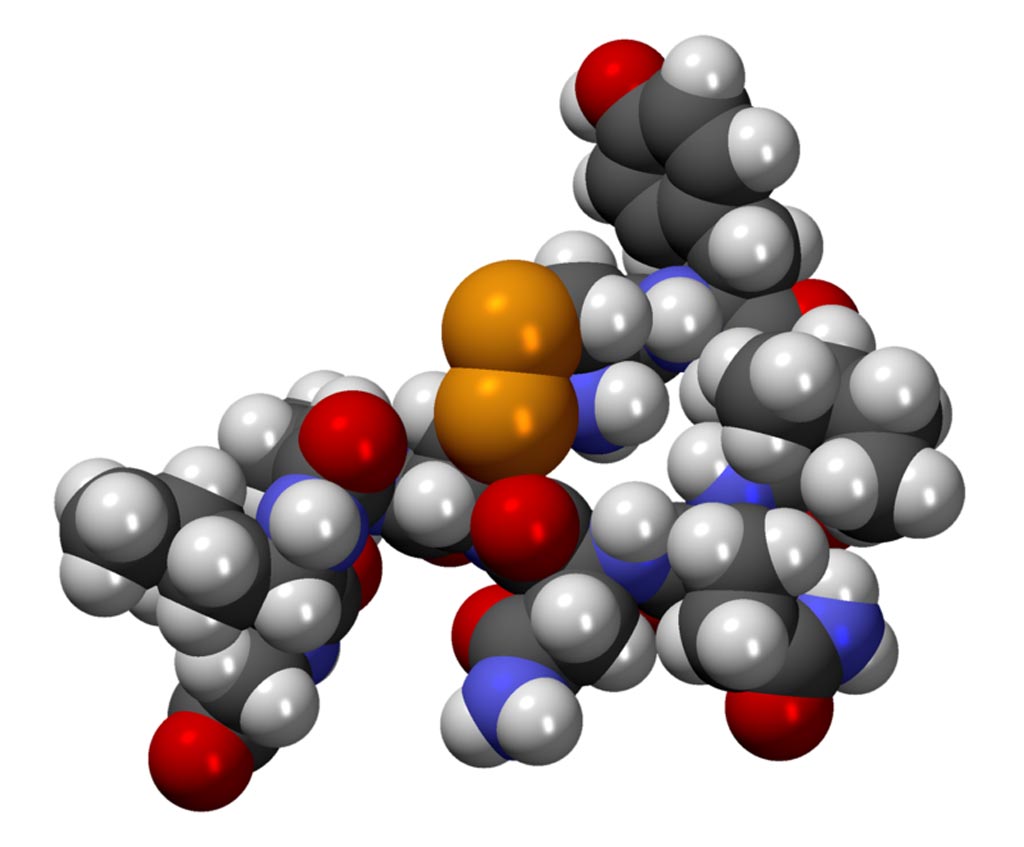Microfluidic Platform Devised for Determination of Autism Biomarker
By LabMedica International staff writers
Posted on 27 Nov 2017
A team of Polish scientists has devised a unique electrochemical microfluidic platform for determination of the autism biomarker oxytocin.Posted on 27 Nov 2017
Significant changes of oxytocin concentration in the blood are considered to be a biomarker of autism. To monitor these changes in a rapid and convenient manner, investigators at the Institute of Physical Chemistry of the Polish Academy of Sciences (Warsaw, Poland) used the technique of molecular imprinting to construct a microfluidic platform for measurement of oxytocin levels.

Image: A CPK model of the oxytocin molecule (Photo courtesy of Wikimedia Commons).
The device comprised monomer layers of polymer that were pocketed with oxytocin shaped nanocavities. The monolayers were coated onto small gold electrodes that were inserted into a tube containing a blood sample. Entrapment of oxytocin molecules in the cavities of the polymer layer changed the electrical capacitance of the polymer and indicated the level of oxytocin binding.
The investigators demonstrated that sensitivity of the system was similar in both synthetic serum samples and in aqueous solutions and, that the measurement was not susceptible to common interferences, such as oxytocin analogs and potential metabolites.
The investigators did point out that oxytocin concentration is only one biomarker for autism, and several other diagnostic tests need to be performed. Towards this end, they have been working on polymer layers that respond to two other autism-associated compounds, melatonin and gamma-aminobutyric acid.
The oxytocin detection platform was described in detail in the September 9, 2017, online edition of the journal Biosensors and Bioelectrics.
Related Links:
Institute of Physical Chemistry of the Polish Academy of Sciences














